Ase Sushi and Kokera Sushi: Regional Japanese Cuisine
Nov 26,2020
Ase Sushi and Kokera Sushi: Regional Japanese Cuisine
Nov 26,2020
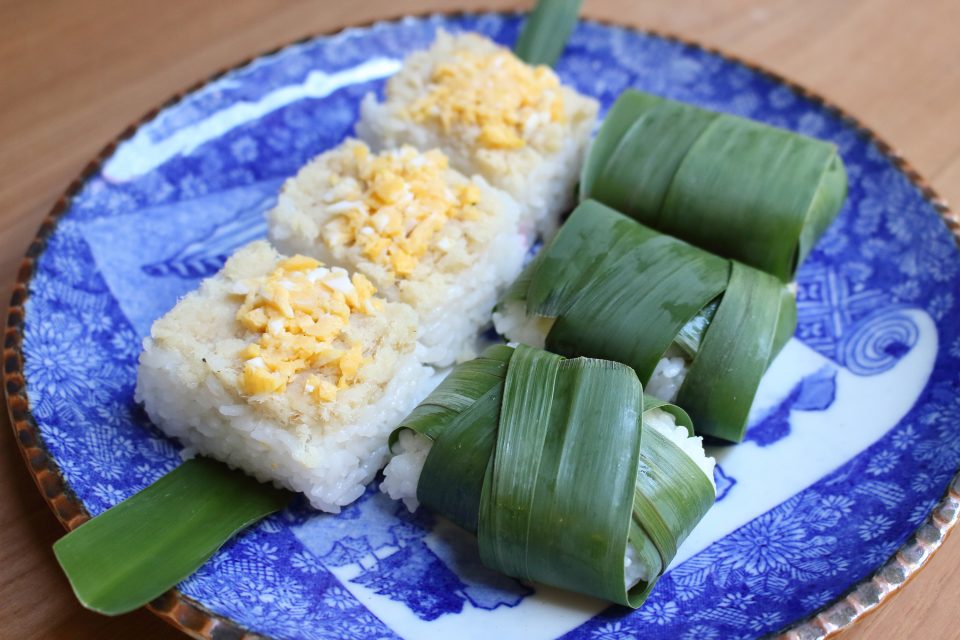

In this irregular series, food culture researcher Kiyoshi Aya describes the local delicacies and ways of life she has encountered in different places throughout Japan.
The Saikazaki Cape is part of the Wakaura region of Wakayama city. The cape, which has been compared to the Amalfi Coast in Italy, is well-known as a beautiful scenic area, with houses clustered together on hill slopes. In this article, Kiyoshi introduces us to ase-zushi and kokera-zushi, two venerable local sushi tastes.
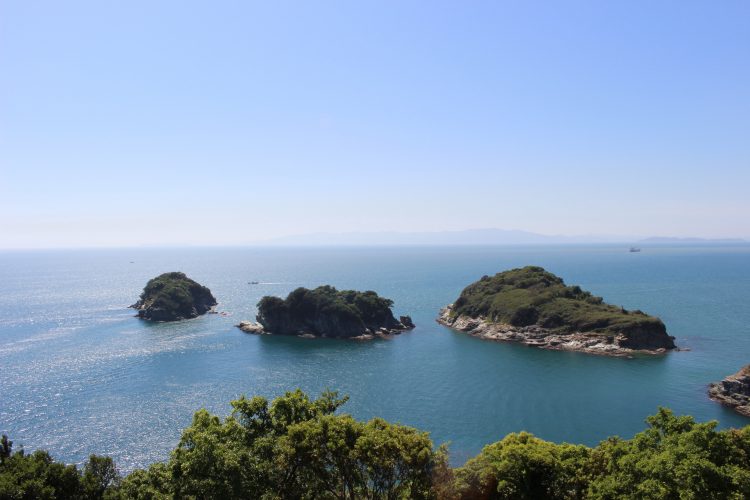
A picturesque view from Saikazaki Lighthouse, with the islands of Oshima and Nakanojima hovering in the foreground and Awaji Island just visible on the horizon
“The prefecture of Wakayama is home to many local sushi varieties. Some notable examples are mehari-zushi, which is wrapped in lightly salted and pickled takana [giant red mustard] leaves from the Kumano region, sanma-zushi [sushi topped with Pacific saury] from the town of Shingu, and ayu-zushi [sushi topped with sweetfish] from the Naga district.”
Sushi can be broadly classified into nare-zushi and haya-zushi. The types of sushi we regularly encounter — nigiri-zushi [hand-pressed sushi], maki-zushi [sushi rolls], and chirashi-zushi [sushi toppings served on a bowl of sushi rice] — all fall into the haya-zushi category. Nare-zushi, on the other hand, which is said to be the origin of modern sushi, is made by marinating salted fish that has been placed in rice and weighted down, letting the lacto-fermentation of the rice preserve the fish from quickly spoiling. The classic example of nare-zushi is funa-zushi [sushi consisting of fermented crucian carp] made along the shores of Lake Biwa in Shiga prefecture.
“Ase-zushi from the Saikazaki Cape was also originally a type of nare-zushi. Mackerel, which had been first pickled in salt and then had the salt removed, was tightly wrapped together with rice in ase leaves, a plant known the giant cane or giant reed, and then crammed into a wooden bucket, weighted down, and left to ferment in lactic acid from a week to up to several months in some cases. Lacto-fermented nare-zushi, unfortunately, has a peculiarly strong odor, and young people especially either like it or detest it. Today, the haya-zushi type of ase-zushi, made quickly by hand with vinegared rice instead of lacto-fermentation, is far more common.”
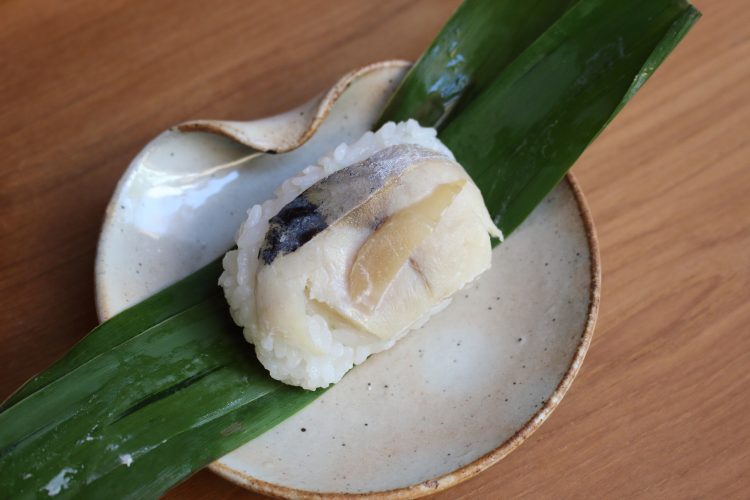
Ase-zushi with fatty mackerel topped with sweet pickled ginger
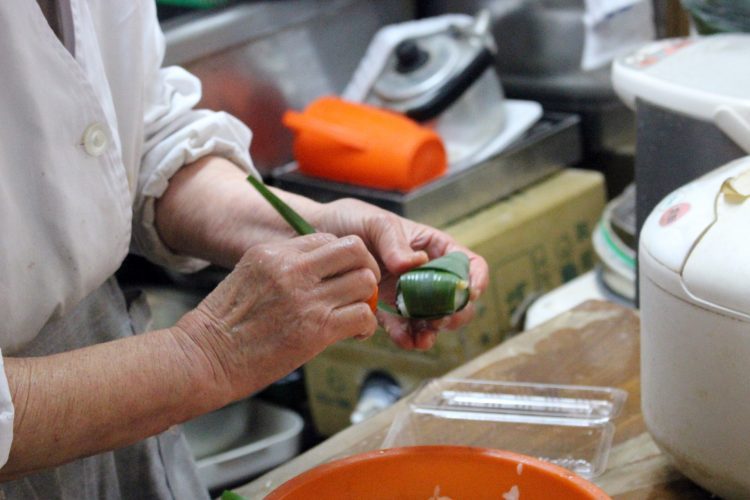
A woman at a local business winds ase leaves around the sushi with skilled hands
The ase in ase-zushi is a large plant of the Poaceae family called the giant cane or giant reed, which grows wild in many places along the Wakayama coastline. Ase-zushi makers go into the hills and forests to harvest leaves. Locals say summertime is when you can get the most beautiful, mature ase leaves.
“Around the country, there are sushi varieties wrapped in leaves, like sasa-zushi [wrapped in bamboo leaves], hoba-zushi [wrapped in the leaves of the magnolia tree], and kakinoha-zushi [wrapped in persimmon leaves]. It seems in all of these cases, the leaves used for wrapping are easily obtained because the plants grow abundantly in the area. The ase leaves used for ase-zushi are strong and rustic. If you unwrap an ase-zushi, you will notice the faint ase fragrance that is reflected in the sushi’s unique flavor. Ase-zushi are still favored by many people today and are readily available at local sushi shops and supermarkets.”
Many ramen shops in the city of Wakayama serve mackerel ase-zushi along with boiled eggs that are always worth a visit.
“I’ve heard that recently there’s been an increase in haya-zushi where the sushi is wrapped in a plastic leaf that imitates ase instead of using real ase leaves. Nevertheless, I think it’s wonderful to see a local delicacy like haya-zushi made with mackerel becoming a standard item at ramen shops and being loved by the younger generations as well.”
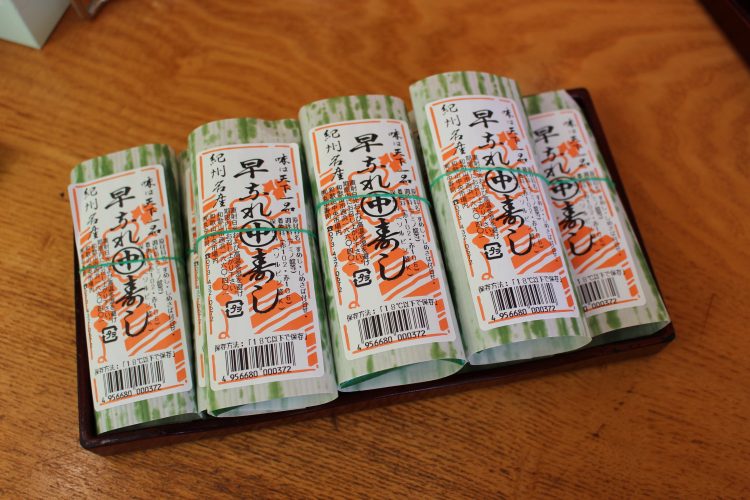
Many ramen shops in Wakayama that serve ramen in pork-bone, soy sauce soup also serve mackerel haya-zushi
Another renowned type of sushi in the area is kokera-zushi.
Historically speaking, the nare-zushi fermentation gradually became milder, and people began eating the rice as well, which had formerly been discarded. This led to the creation of ii-zushi [rice sushi] and kokera-zushi, which featured the rice more than the fish. Kokera-zushi, which is made with rice topped with dried fish and vegetables, is said to be the archetype of today’s pressed sushi and hako-zushi [box-shaped pressed sushi].
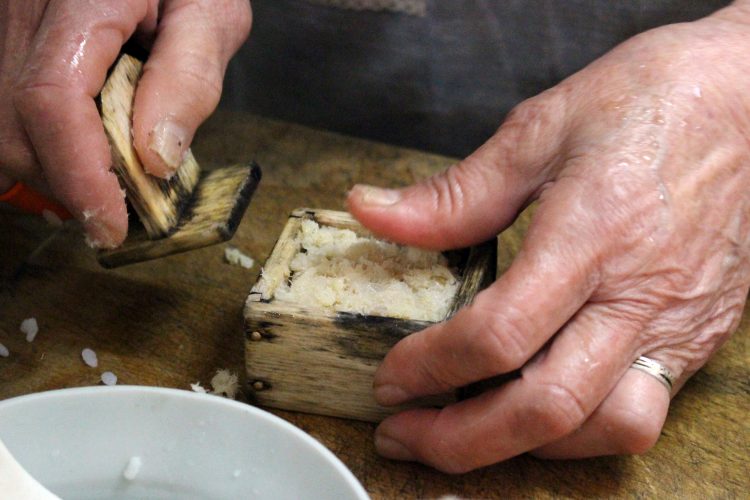
Kokera-zushi topped with deboned, minced lizardfish
“The kokera-zushi made on the Saikazaki Cape uses minced lizardfish. Lizardfish is incredibly delicious, but it’s usually used as an ingredient in boiled fish paste, as it has many bones. On the cape, however, you can eat kokera-zushi with lizardfish. The sweet taste is fabulous and it’s a dish served with pride in the area.”
Kiyoshi adds that there are many varieties of sushi in Japan available only in specific regions. Enjoying such exclusive local sushi is one of the pleasures of traveling the country.

food culture researcher and Secretary of the Research Division at the National Council for Washoku Culture
food culture researcher and Secretary of the Research Division at the National Council for Washoku Culture
Born in Osaka prefecture, Kiyoshi is involved in researching traditional regional Japanese cuisine and the dietary habits in fishing and farming communities as well as writing and giving lectures about local foods.
Recent publications include Washoku Techo [Washoku Handbook] (co-author, published by Shibunkaku), Furusato no Tabemono [Hometown Food] (Washoku Culture Booklet No. 8) (co-author, published by Shibunkaku), and Shoku no Chizu [Maps of Food], Third Edition (published by Teikoku-Shoin).